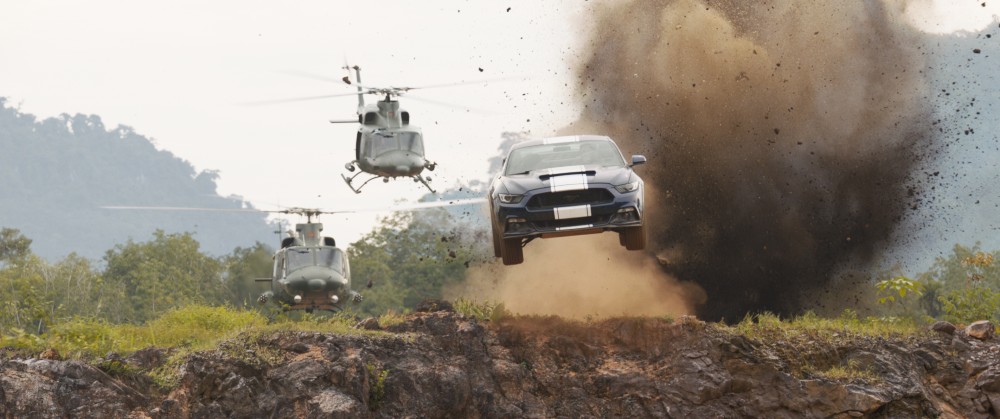
Since its first entry in 2001, the Fast and Furious franchise has earned some $6 billion, making it one of Universal Studios‘ most valuable properties. F9: The Fast Saga opened in North America on June 25 with $70 million, and has earned almost $400 million worldwide, so far.
The plots have evolved from drag racing in East L.A. to international spy conspiracies, while the cast has expanded to include Jason Statham, Dwayne Johnson, Charlize Theron, and Helen Mirren. But the core of the franchise has remained the same: Dom Toretto (Vin Diesel) protecting his “family” from outside threats. In the latest entry, Dom and his crew (played by Michelle Rodriguez, Jordana Brewster, Tyrese Gibson, Chris Bridges, Nathalie Emmanuel, and Sung Kang) have to dismantle a super-weapon wielded by his brother Jakob, played by Jon Cena.
After an eight-year absence, Director Justin Lin returns to the series he helped resurrect with Fast & Furious: Tokyo Drift. The cinematographer on that film, Stephen F. Windon, ACS, ASC, worked with Lin on four subsequent features, including Star Trek Beyond, as well as the James Wan-directed Furious 7 and F. Gary Gray‘s The Fate of the Furious.
Windon has collaborated with filmmakers like Steven Spielberg, Tom Hanks, Jon M. Chu, Kevin Costner, and J.J. Abrams, in the process winning seven Australian Cinematographers Society Awards.
He spoke with Below the Line by telephone.
Below the Line: You’ve worked with Justin Lin on a number of films now — how do you two collaborate?
Stephen Windon: Working together since 2005, it feels pretty seamless now. We think with the same visual language, which helps. Our language is strong and cohesive, and I hope it shows on the screen. Our role is to make a big action film, it’s as simple as that. We are fortunate to work with Universal, which is very supportive of the way we want to make the film.
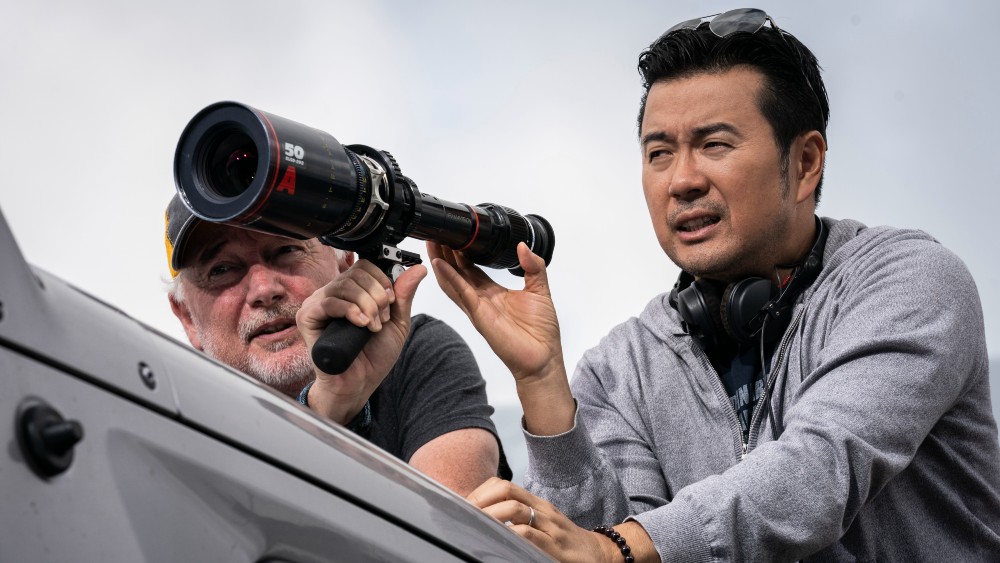
BTL: So by now have you been able to assemble a crew you can return to for each project?
Windon: Pretty much. My A-camera operator Geoffrey Haley has been with me on nearly all the six films I’ve done in the franchise. We’ve been based in Atlanta and in the UK, and fortunately, I have crews in both cities. The second unit has been pretty consistently the same team: the amazing Spiro Razatos [also Stunt Coordinator] and DoP Igor Meglic, who’s a genius. We’ve been working together a long time.
BTL: F9 had three production units working. How do you coordinate with everyone?
Windon: My job nowadays is management, as well as cinematography. When we were shooting in the UK, the second unit was shooting in Thailand at the same time. My day would end at eight or nine o’clock in the evening, when Igor in Thailand would be starting work. We would talk about the day’s work, the lights, lenses, weather, all the things that can affect your day. Try to come up with solutions. Communication is certainly a lot easier these days.
BTL: What was your camera package?
Windon: I shot with two different sources. First, with the Arri Alexa using the ARRIRAW codec at 3.4K. We chose Panavision Primo lenses that were manufactured in the late 1980s, early 1990s. I shot about twenty percent of the movie on 35mm film, using a Panaflex camera. All of the flashbacks, quite a chunk of the movie, were on 35mm. The scenes at the Baldwin Raceway, the early scenes with young Dom [played by Vinnie Bennett] and Jakob [Finn Cole] was on the Kodak film I was sort of raised on. It was nice to have that texture. It gave us a distinct look for the flashback sequences. We got our consistency between film and digital by using the same lenses for both.
BTL: How did it feel going back to film?
Windon: Furious 7 was the first digital Fast and Furious film. Fast 6 was the last one we shot on film back in 2012. It was great working on film again, it was so nice to look through a movie camera with a mechanical shutter. I really loved it.
BTL: Judging from what we see on the screen, this looks like it was an enormous production. How big did it get?
Windon: On a general, day-to-day basis, we’re using three to four cameras. But whenever there is a big sequence that involves a crash or pyrotechnics or anything like that, there can be anything up to 20 or 22 cameras. That might include cameras in a helicopter, in a drone, in crash boxes. We have an Ultimate Arm for camera vehicles, we mount cameras on the picture cars as well. Cameras inside cars, shooting point-of-view or over somebody’s shoulder, the stuntman or a double. It’s fun coming up with all that process. It’s great for my camera team.
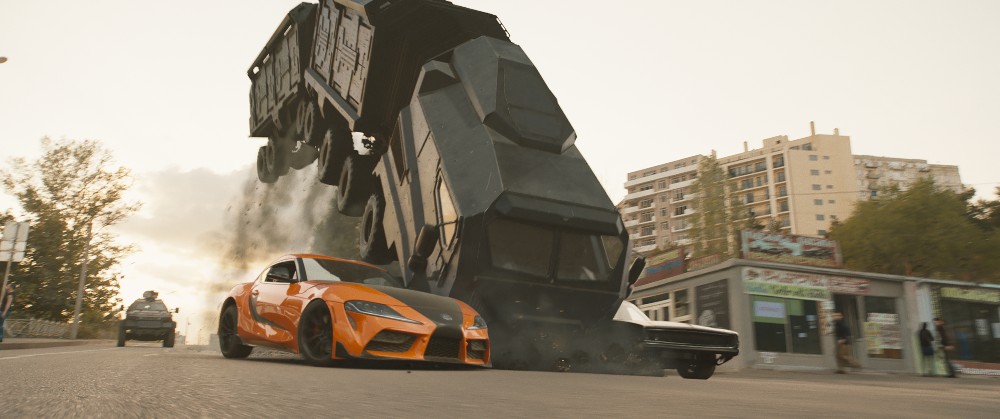
BTL: Do you devise your own equipment? Camera rigs, for example?
Windon: There’s never really one standard rig for a scene, you know what I mean? Everything we work with is pretty much a bespoke camera rig. We design and make so many different things, whether it’s a wire cam or a stabilized head on a vehicle. No two rigs are the same. Plus, there’s always some new gear, some new bit of kit, some little small camera you can, you know, put on the road, so a car can drive over the top of it without damaging it. We embrace that sort of technology. It’s a lot easier to put cameras in incredible places than it used to be.
BTL: Some of the stunts in F9 look like they were hard on the equipment.
Windon: There is risk associated with expensive equipment. It’s not something we want, but sometimes cameras just get destroyed because that’s the nature of action cinematography.
BTL: How has technology advanced since Tokyo Drift back in 2005?
Windon: Take a situation which happens in this film: you have a wide shot of vehicles racing through a jungle, bouncing around. Before, we’d cut to a close-up of the actors driving. With this film, we had the technology to be able, in almost one shot, to go past a tree, a truck would wipe frame, and then we continue past Letty’s [Michelle Rodriguez] motorcycle, climb up and land on the windshield of a car with Ramsey [Nathalie Emmanuel] and Tej [Chris Bridges] inside, and their dialogue would begin.
Now, for instance, that exterior shot was second unit in Thailand, but the interior with the actors was shot on a motion base in the UK. What makes the technique so effective is we put a motion detector inside the second unit vehicle. It would record whenever the vehicle was pitching left or right, up and down, side to side. We’d put that data into the motion base on the UK set, and our vehicle there would emulate exactly the movement of the second-unit vehicle. What that means is my actors look like they’re a hundred percent in that world.
BTL: Then you stitch the shots together to make it seem like one take?
Windon: That’s right. It happened quite a few times here. Instead of a big, wide aerial shot, cut to interior dialogue, we have these cool moments that connect.
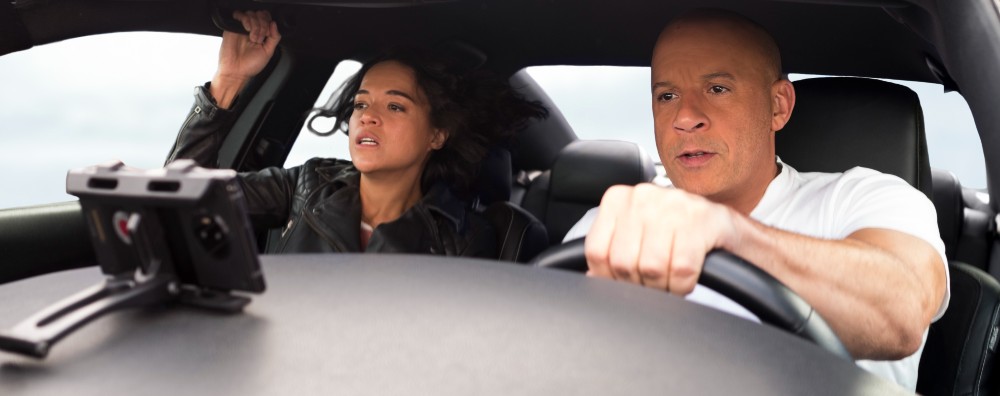
BTL: You must be throwing those poor performers around a lot.
Windon: Yeah, we do. I’ve always believed in showing the physics. Someone might say, “We could fake that, tip the camera upside down.” But I always felt that if Dom’s in a car, and he’s falling off a cliff, and he’s wearing a necklace — that necklace should be moving away from him. So we’ll harness Vin in there, we’ll put Michelle in there, and we can fairly accurately achieve what the real physics would look like.
BTL: No matter how wild the scenes get in F9, they always feel grounded in some kind of reality.
Windon: Well, things happen that are kind of, you know, crazy from a physics perspective. But particularly if you’re on the actors, we want you to feel what they would feel.
BTL: How much do you rely on storyboards and previz?
Windon: We do tend to do a lot of previz, it’s really for the benefit of figuring out beats, how long sequences should be, it helps with tempo and timing. Previz can help with the kind of shots we design, the rigs we build, the methodology in how we hand off to different units, like our visual effects plate unit. It also helps our assistant director with scheduling. It helps with budgeting as well.
You know, we try to do everything as practical as we can. That said, there’s a visual effects component we have to consider. So previz helps us put all these things together, gives us a plan. There’s always room for adjustment, flexibility, which I like when we’re filming.
BTL: One of the hallmarks of the series is the use of practical effects, practical stunts. But you can’t always predict exactly what’s going to happen when you smash a car into a wall.
Windon: No, not exactly. I shoot with multiple cameras, knowing that the science of flipping a car may not be that precise. It’s a little more organic, maybe. In a way, we’ve become like engineers, because we sort of know what happens from previous films if we shoot a car off a building or send it off a cliff or throw it out of an airplane. Quite often when we’re testing, we learn about the aerodynamics and physics involved.
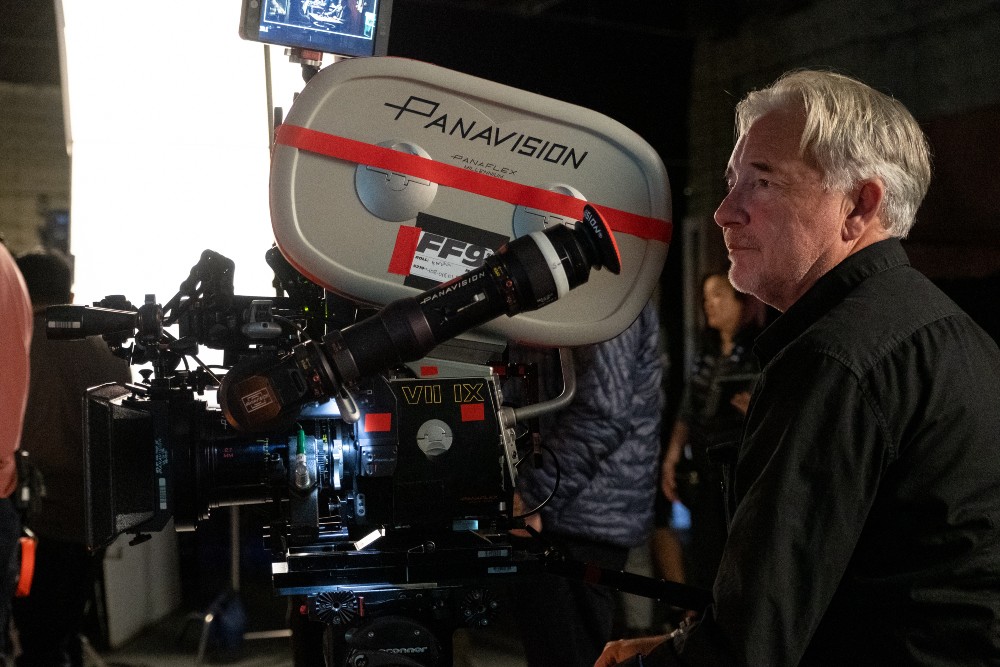
BTL: How did you achieve the underwater sequences?
Windon: The scene with Dom and Letty, we shot that in an underwater tank at the Manhattan Beach Studios in Los Angeles. January 2020. It worked out beautifully. I shot that with an Alexa LF, the large-format camera, just in case they wanted to do any reframing.
BTL: So you just beat the COVID shutdown?
Windon: Actually, we finished the additional photography and I did two weeks of color timing. When I went home to Australia, they were still finishing the visual effects. So I ended up doing the color timing remotely for a few weeks with Andre Rivas in Los Angeles. I love doing the DI, it’s one of my favorite things, it’s as exciting as lighting.
BTL: You’re working in Prague now on a film. How have the COVID protocols affected your work?
Windon: It’s a movie called The Gray Man, a big action movie directed by Anthony and Joe Russo, starring Ryan Gosling, Ana de Armas, Chris Evans, and Billy Bob Thornton. We started in February. We shot at Long Beach, California, for 64 days, then 21 days in France, and we just arrived here in Prague yesterday, where we are prepping to shoot for the next four weeks.
It’s been difficult. It’s been tricky. The background extras in California, maybe 150 people, had to be sequestered. The protocols brought an additional complexity and logistical challenge to the production. I hope it’s the only film I have to do wearing a mask 14 hours a day.
F9: The Fast Saga is now playing in theaters nationwide and across the globe.
All photos courtesy of Universal Pictures, photographer credits, as noted.





